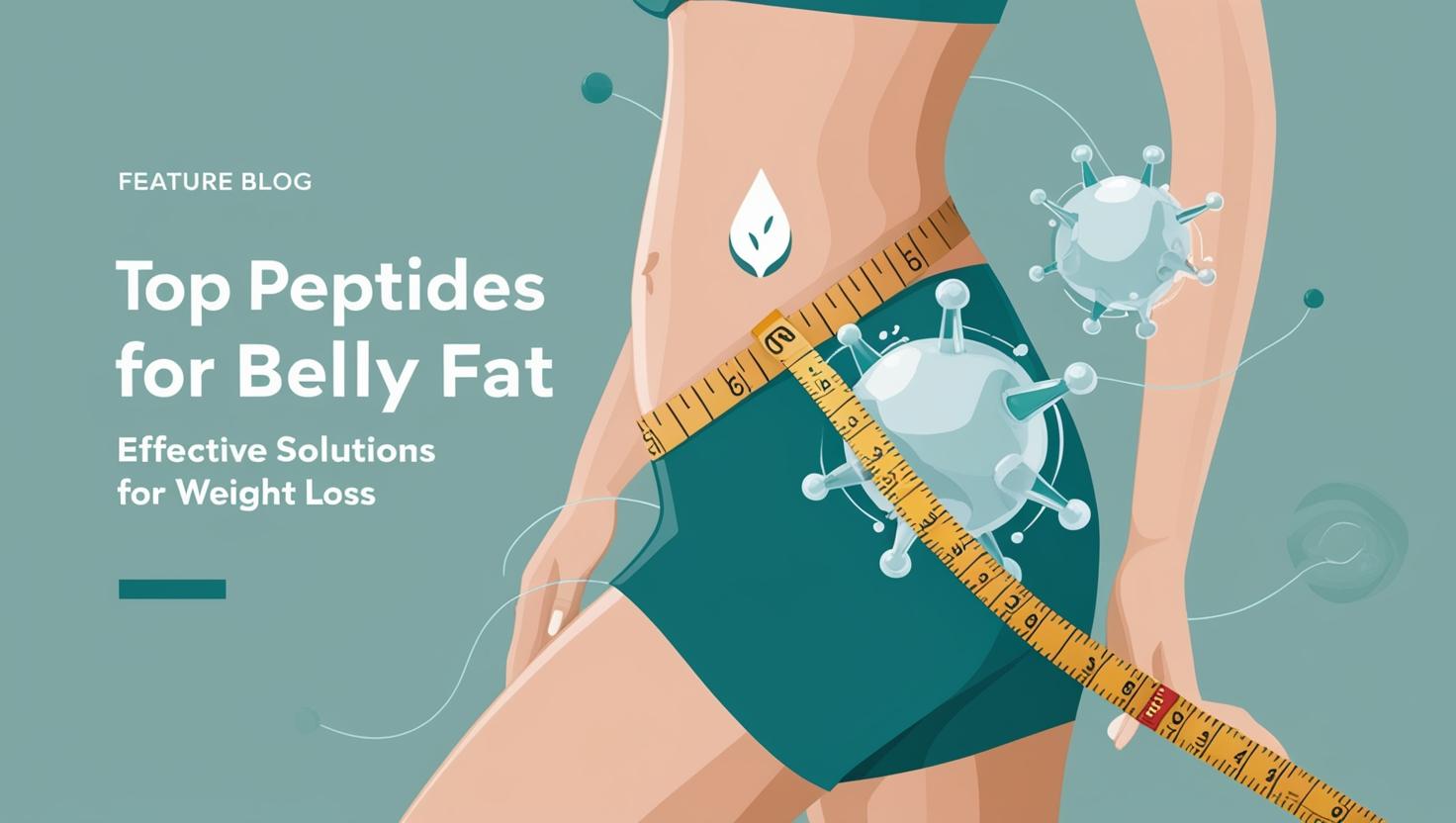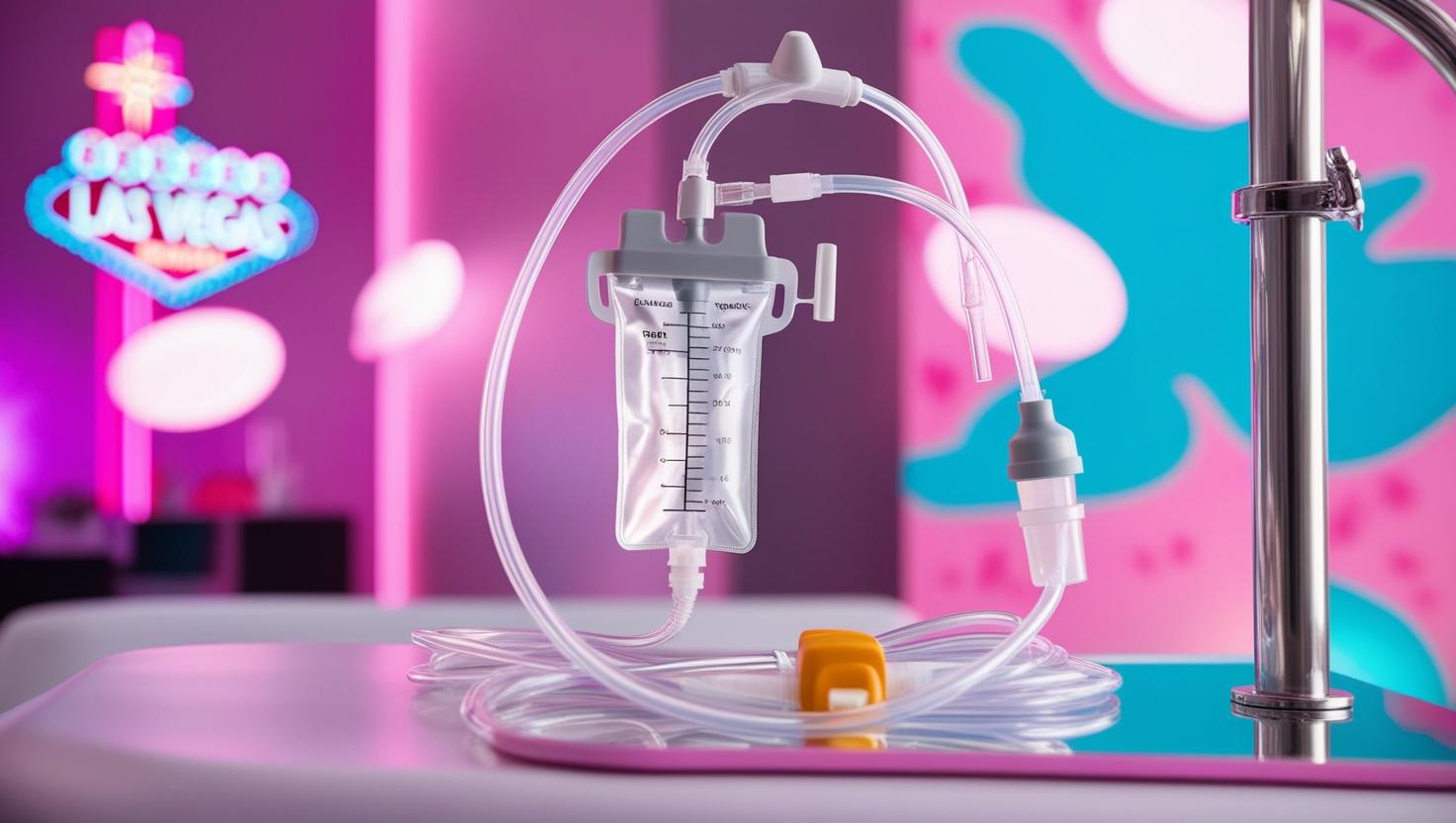Is testosterone therapy a safe and effective way to maintain vitality in your senior years? As men age, declining testosterone can bring unwanted changes that impact health and wellness. This article takes a closer look at testosterone for seniors, assessing the risks and rewards of hormone replacement options. We peel back the layers of efficacy, safety, and personalized care to help you make informed decisions about managing testosterone levels after 50.
Key Takeaways
- Testosterone levels naturally decline with age, leading to various health concerns, and testosterone replacement therapy (TRT) may offer potential benefits, but is not a universal solution and requires careful consideration of individual health profiles.
- TRT has been shown to improve sexual function, increase muscle mass, and reduce fat mass in older men, but its effects on muscle strength, sustained sexual function, and cognitive health remain unclear and require further research.
- Safety studies, such as the TRAVERSE trial, indicate testosterone therapy does not significantly increase the risk of heart disease or prostate cancer in men with low testosterone, but regular monitoring and a personalized approach to treatment are advised.
Understanding Testosterone’s Role in Aging
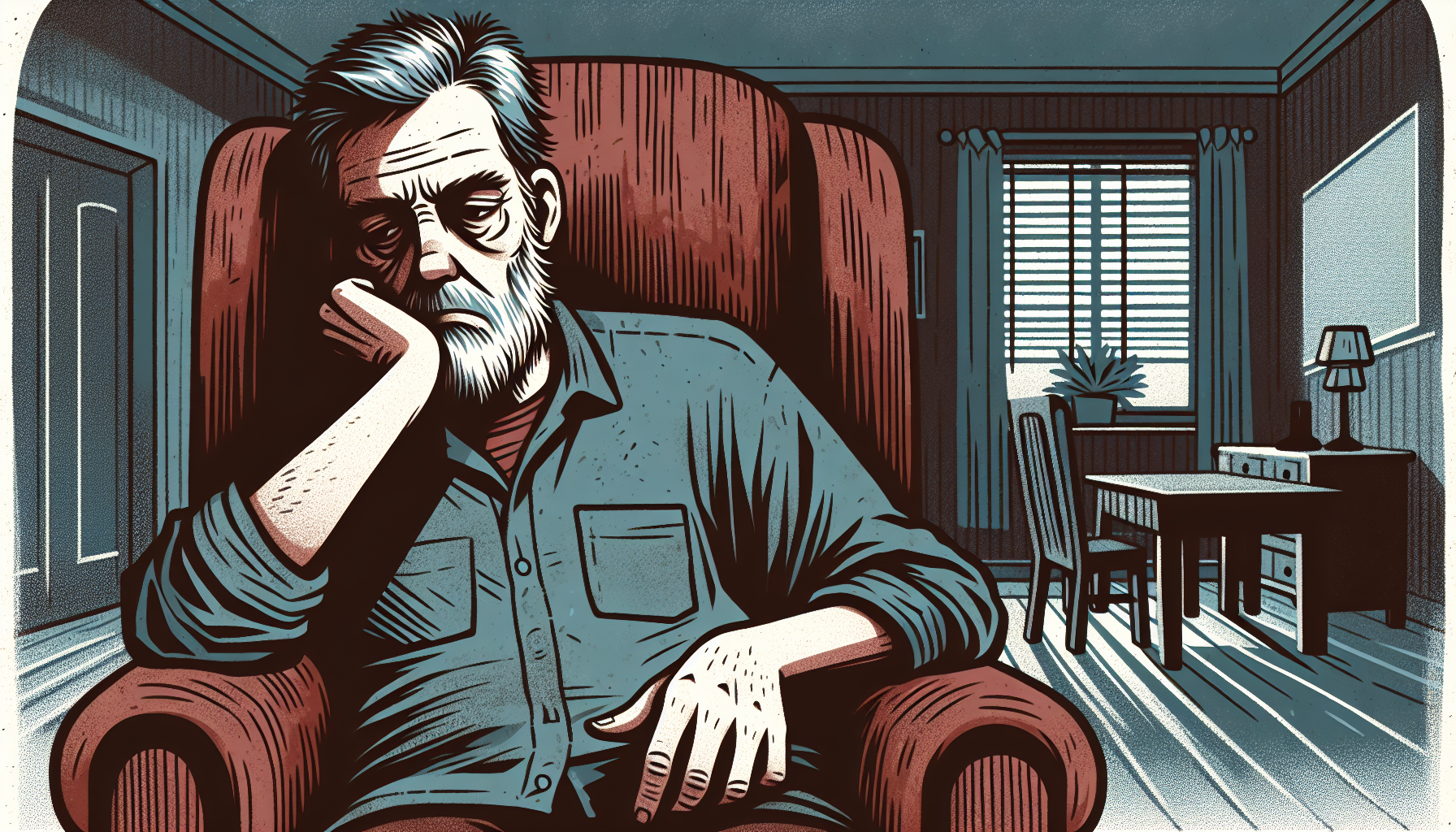
In the symphony of hormones that orchestrate bodily functions, testosterone stands out as a vital conductor, particularly for men. It’s no secret that as the clock ticks on, the vigor of youth often wanes, and with it, testosterone levels naturally diminish. This decline, approximately 1% annually post the age of 30 or 40, is an age-related inevitability that can lead to a cascade of health concerns, including:
- Reduced muscle mass
- Creeping weight gain
- A dimming libido
- A foggy mind
These are just a few of the telltale signs of diminishing testosterone, which may be associated with low normal testosterone levels.
However, the allure of testosterone therapy as a panacea for aging men may not be as straightforward as it seems. While testosterone replacement therapy is touted to restore one’s former glory, it is not a universal solution for the natural decline of hormone levels with age. Aging and testosterone interact in complex ways, making it unwise to prescribe therapy indiscriminately without considering individual health profiles. After all, the goal is not to turn back the hands of time but to support the body in aging gracefully and healthily.
The conversation around testosterone therapy has amplified over the years, driven by a surge in testosterone prescriptions and an increasing number of aging men seeking a testosterone solution. Nevertheless, while the hormone plays an undeniably critical role in male health, deciphering when its administration is truly warranted remains a topic of intense debate and research. Understanding that a decline in testosterone is not a disorder but a natural part of aging, which may or may not need medical intervention, is crucial.
Evaluating the Efficacy of Testosterone Replacement Therapy (TRT)
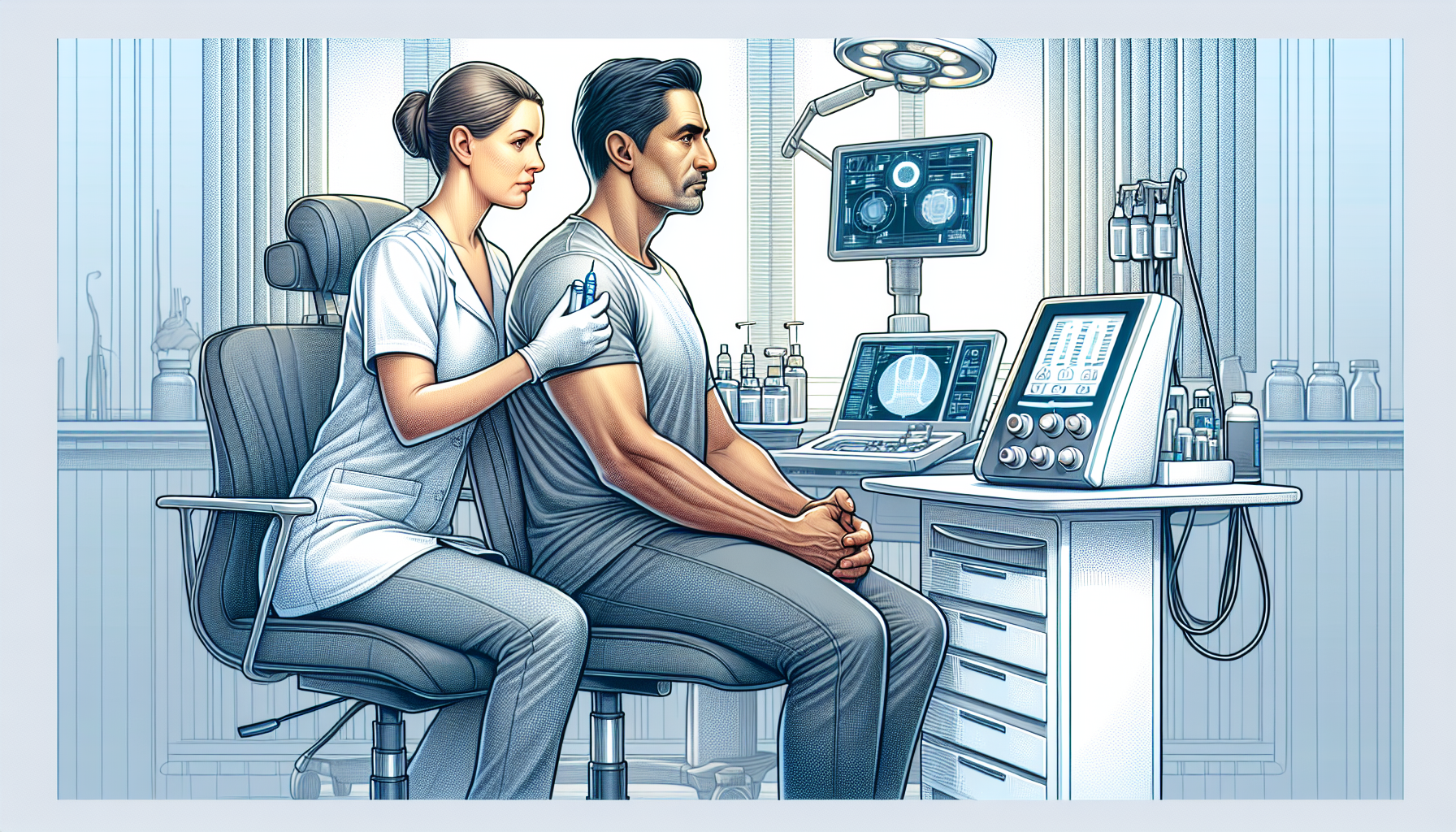
Testosterone Replacement Therapy (TRT) has become a beacon of hope in the twilight years for some, promising to reignite the dwindling fires of vitality. But does the science back up the hype? The efficacy of TRT in elderly men, particularly those with low testosterone levels, is a hotbed of discussion. Studies indicate potential positive effects on muscle mass, sexual function, and overall vitality.
However, the waters are muddied with mixed effects on muscle strength and physical function, leaving the benefits of testosterone treatment in a nebulous state amid conditions such as frailty and body fat accumulation.
Muscle Strength and Body Composition
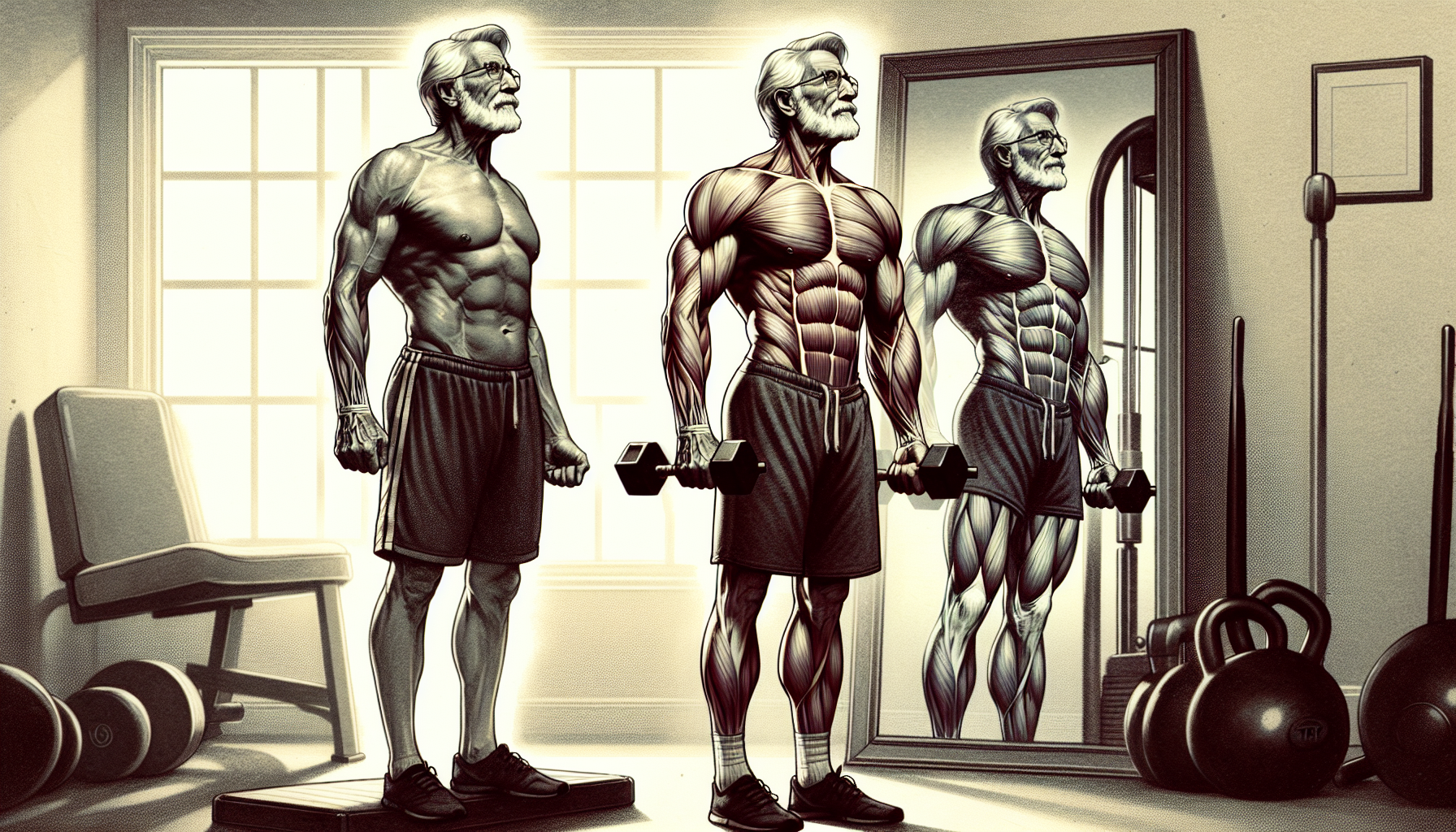
As we peel back the layers, TRT shows promise in enhancing body composition in older men grappling with low serum testosterone levels. There’s something undeniably appealing about the prospect of restoring one’s physical form to its former robustness. In particular, testosterone therapy has been shown to boost muscle mass, potentially turning the tide against the natural muscle attrition that comes with age. The benefits extend beyond the mirror, as decreases in fat mass have also been observed, evidenced by a slimmer waistline and a dip in body fat percentage.
But what does this mean for physical function? Can the elderly expect newfound strength and muscle performance? While the increase in muscle mass is an encouraging sign, the connection to actual muscle strength and performance enhancement is a bit more tenuous. The evidence remains inconclusive, and it’s clear that TRT is not a magic bullet for frailty or a substitute for resistance exercise training.
The narrative of TRT is one of cautious optimism when it comes to muscle and body composition. Although the therapy can facilitate an increase in muscle mass and fat reduction, it is not the ultimate solution for enhancing physical function and muscle performance. It’s a piece of the puzzle, but not the entire picture, and it’s essential to manage expectations while capitalizing on the potential benefits.
Sexual Function Restoration
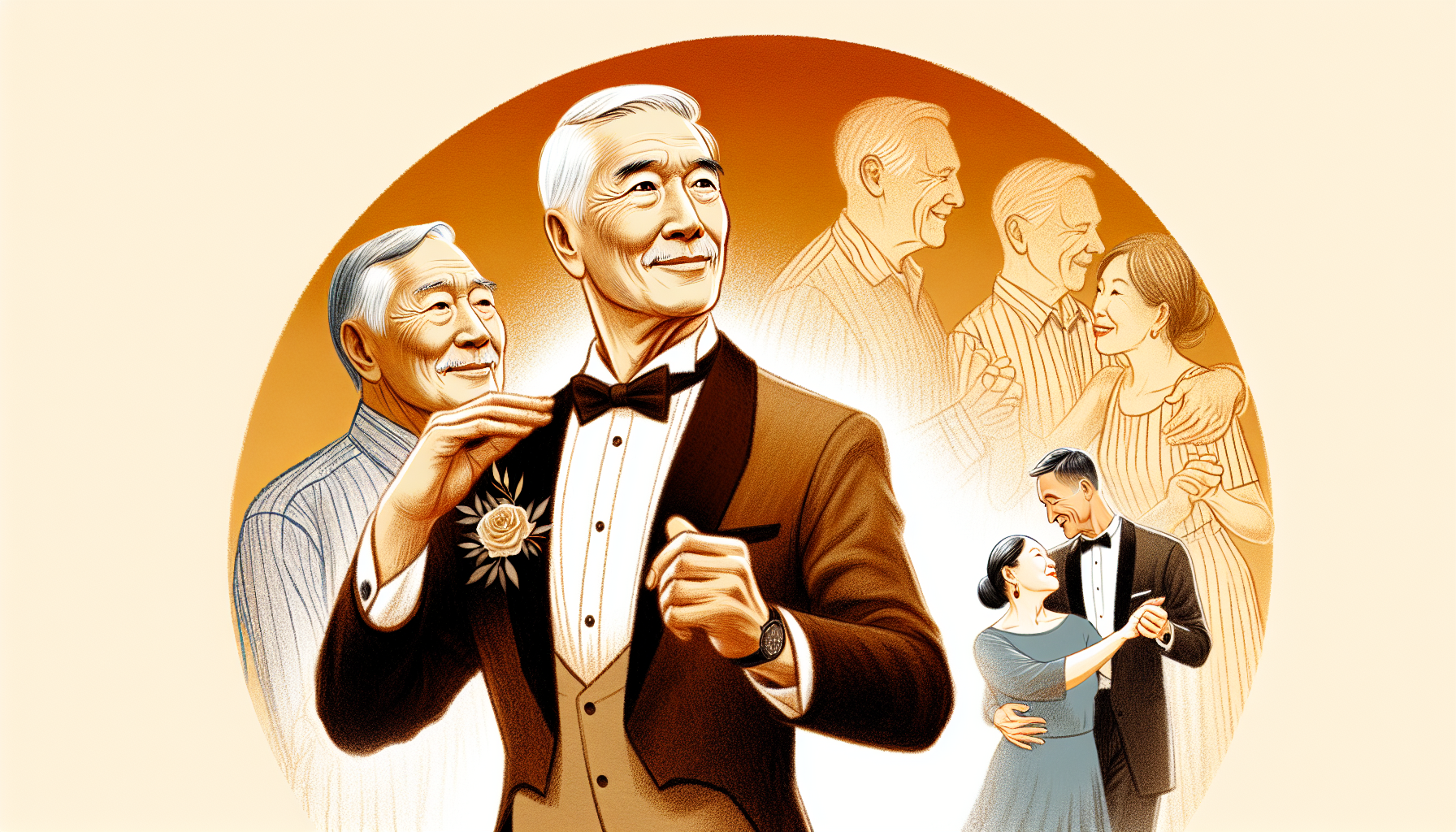
Venturing into the domain of intimacy, TRT beckons with the promise of rekindled sexual function for aging men. The whispers of testosterone supplementation improving erectile function and libido echo through the halls of hope, addressing concerns of erectile dysfunction. The Testosterone Trials provided a glimmer of light, indicating that TRT could indeed bolster sexual function, with a ripple effect that may even touch upon mood. A more in-depth dive into the subject reveals a 1-year therapy with testosterone gel significantly enhancing measures of sexual activity in older men with low libido and serum testosterone levels.
However, the waters become murkier when we gaze into the horizon of long-term benefits. A 3-year study casts a shadow of doubt, revealing no conclusive evidence of sustained sexual function improvement over time. This raises the question of longevity in the effects of testosterone therapy on sexual health. How does one weigh the fleeting joys of improved sexual desire and activity against the uncertainty of long-term efficacy?
Hence, while TRT may indeed fan the flames of sexual desire and function in the short term, the enduring nature of these effects remains shrouded in mystery. It’s a reminder that while science can offer assistance, it also demands vigilance and a keen eye on the evolving landscape of evidence. Those considering TRT for sexual rejuvenation should take a balanced approach, keeping in mind both the potential benefits and the inherent limitations.
Cognitive Health and Mood Enhancement
The intricate tapestry of the mind is not immune to the effects of aging, and testosterone’s role in cognitive health and mood is a subject of great intrigue. Higher free testosterone levels have been associated with a more vibrant cognitive palette in older men, with low levels painting a grimmer picture of dementia risk,. The correlation between low testosterone concentrations and brain aging suggests that hormonal decline might contribute to the dimming of cognitive sharpness, particularly in men above 80.
Yet, when it comes to lifting the fog of depressive symptoms and stabilizing mood, TRT’s brushstrokes are gentle, yielding only modest benefits. Interestingly, testosterone therapy has demonstrated a capacity to reduce anxiety, irritability, and aggression, contributing to a more harmonious mental state rather than stirring the pot of aggression. The cognitive canvas remains complex, with mixed results on the enhancement of cognitive function and quality of life.
The narrative of testosterone and cognitive health is one of cautious exploration, with studies offering a glimmer of hope but not a definitive answer. Upon reviewing the evidence, we can see that although TRT has the potential to improve cognitive function and mood, it is not a cure-all for the mental challenges associated with aging. It’s a potential ally in the battle against cognitive decline, but one that must be wielded with precision and a thorough understanding of its nuanced effects.
Safety Profile: Addressing Heart Disease and Prostate Cancer Rispects
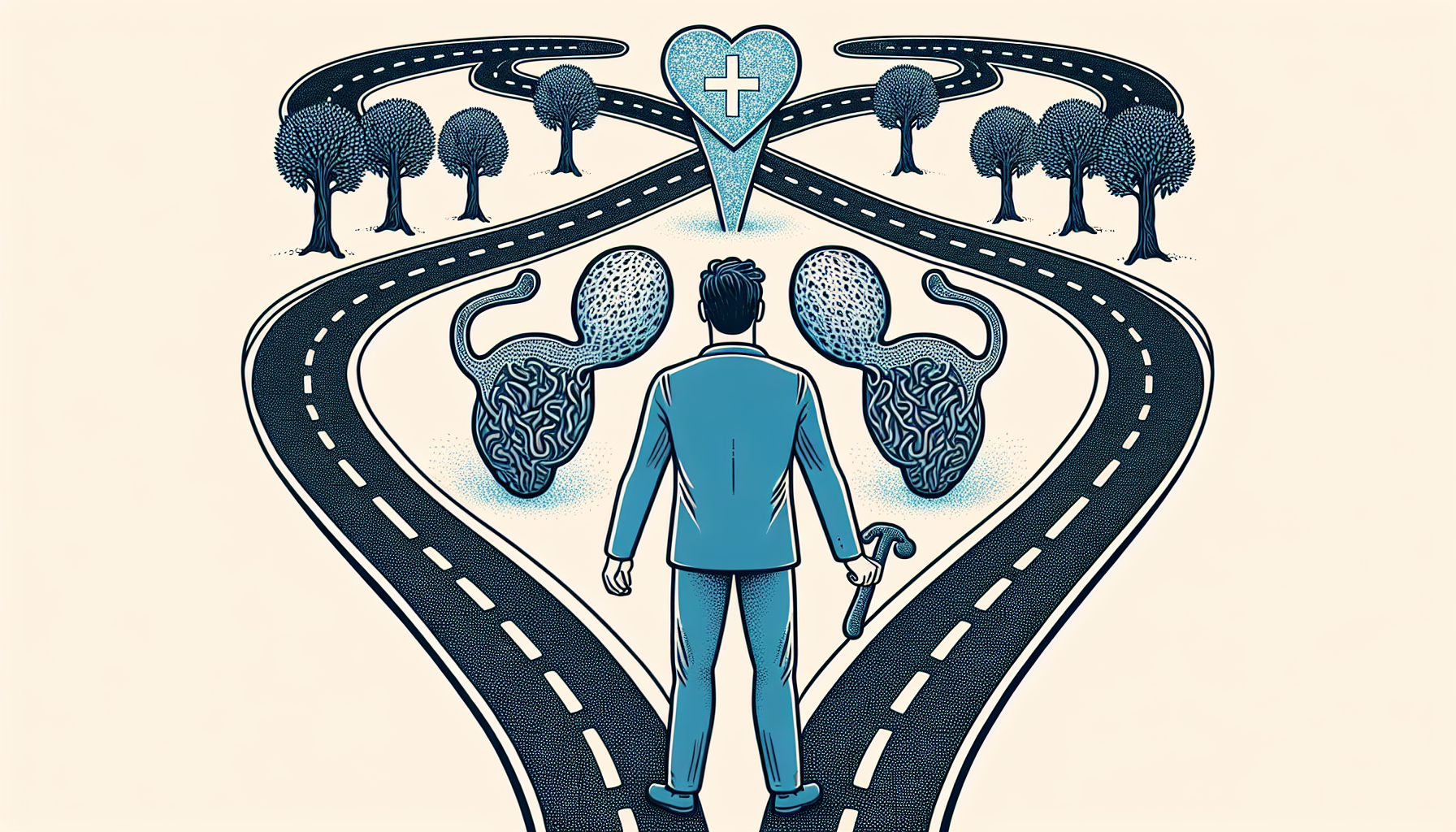
The quest for vitality must tread carefully on the ground of safety, and TRT is no exception. The TRAVERSE study offers a beacon of reassurance, suggesting that testosterone therapy does not increase the risk of heart disease or prostate cancer in men with hypogonadism, a condition marked by low testosterone levels,. While the study, led by a consortium of testosterone product manufacturers, showed similar occurrence rates of major cardiac events between the testosterone and placebo groups, it did raise flags regarding an increased risk of atrial fibrillation and other adverse events,.
Cardiovascular Concerns
In the realm of heart health, TRT walks a fine line. The reassuring hand of the TRAVERSE trial guides us, suggesting no spike in heart attacks or strokes among those venturing into testosterone therapy landscapes. Even those with a heart disease herald on their horizon did not see an elevated risk. The nuanced findings show that while TRT may not be the harbinger of major cardiovascular events, it is not entirely free from potentially adverse effects such as cardiac arrhythmias and acute kidney injury.
The participants of the trial, primarily men aged between 45 to 80 with a pre-existing heart condition or an increased risk profile, serve as a testament to TRT’s tempered cardiovascular safety profile. As endocrinologist Dr. Bradley D. Anawalt eloquently puts it, the TRAVERSE results alleviate the cloud of concern that has long loomed over testosterone therapy’s link to strokes and heart attacks,.
Treading through the maze of cardiovascular health, TRT appears to be a companion that does not turn its back on the heart. Yet, it is a partnership that demands vigilance and an awareness of the subtleties that may surface. In the journey towards heart health, TRT serves as a cautious ally—while it does come with its set of caveats, it is not the enemy we once feared.
Prostate Health Monitoring
Venturing into the domain of prostate health, TRT’s safety record holds steady. The shadow of prostate cancer risk does not darken the path of those receiving testosterone therapy, as no increased peril was observed over the span of the TRAVERSE study’s 33-month follow-up,. Nonetheless, the saga of TRT is not one of blind faith, and regular monitoring of prostate-specific antigen (PSA) levels is recommended for those who choose this path.
The terrain of prostate health is one of constant vigilance, where regular blood tests become the compass guiding the journey. These tests are the sentinels, ensuring that testosterone therapy does not veer into the realm of prostate enlargement or exacerbation of benign prostatic hyperplasia. It’s a reminder that while TRT may not be a harbinger of prostate cancer, it is not a journey to be embarked upon lightly.
In navigating prostate health, TRT does not call for alarm, but it does require a steady hand at the helm. Regular PSA monitoring is the lighthouse, ensuring that the waters remain calm and navigable. With a meticulous approach, TRT can be a viable option for those grappling with hormonal decline, without the looming threat of prostate cancer overshadowing the journey.
Navigating Treatment Options for Low Testosterone
The landscape of low testosterone treatment is rich with options, each tailored to the unique contours of individual health. Testosterone administration, also known as testosterone therapy, takes many forms, including:
- Oral testosterone undecanoate
- Transdermal gels and solutions
- Injectable forms like testosterone cypionate and enanthate
- Nightly patches
- Thrice-daily nasal gels
- Therapies for the buccal cavity
- Surgically implanted pellets
The arsenal of alternatives is vast, offering a range of choices for patients.
Personalization is the compass by which therapy must be navigated, with each route selected to suit the patient’s needs and manage potential side effects such as skin reactions or gum irritation. Treatment is not a one-size-fits-all scenario; it is a myriad of options that must be carefully navigated to ensure a smooth journey.
In the endeavor to find the right testosterone solution, the guidance of healthcare professionals is invaluable. They are the navigators who can help chart the course through the myriad of treatment options, taking into account the patient’s unique hormonal landscape and health profile. With their expertise, the voyage toward restoring balance can be a journey marked by:
- hope
- health
- certainty
- reduced risk
The Impact of Long-term Testosterone Use
Over time, long-term use of testosterone therapy reveals a future that holds both potential benefits and uncertainties. Metabolic benefits such as improved blood glucose levels and healthier lipid profiles have been charted, alongside a reduction in inflammation,. Yet, the seas of long-term impact are not fully navigated, with conflicting evidence on bone density and a research gap in understanding testosterone’s long-term safety profile,.
Metabolic and Urological Benefits
The voyage of testosterone therapy through the waters of metabolic syndrome reveals a favorable wind. Obese hypogonadal men have found their burdens lightened, with gradual weight reduction and waist circumference decrease charting a course towards improved health,. These changes are not just cosmetic; they reflect a deeper transformation within the body’s metabolic processes, signifying a return to a more balanced state.
The urological realm also bears witness to testosterone’s beneficial effects. Some of these effects include:
- A steady decline in average residual bladder volume
- A rise in prostate volume, hinting at improved urological function
- Better scores on the International Index of Erectile Function subscale
- Lowering of scores for the International Prostate Symptom
These milestones paint a picture of a therapy that touches upon the very core of men’s urological health.
Starting on the journey of long-term testosterone therapy, one discovers benefits that go beyond mere physical changes. It is a journey of metabolic and urological renewal, where the benefits of TRT ripple through the body, offering a renewed sense of vitality and well-being. As we chart these waters, the promise of testosterone therapy as a means to mitigate the metabolic syndrome becomes increasingly tangible.
Bone Health and Fracture Risk
As the chronicles of testosterone and bone health unfold, the role of TRT in fortifying the skeletal framework of the elderly is brought to light. Low testosterone levels have been linked to a fragile bone matrix, increasing the risk of fractures—a significant concern in the golden years. Through the lens of testosterone treatment, we see a potential remedy, as it has been shown to bolster the spine’s trabecular volumetric bone mineral density, laying the foundation for improved bone health.
The testament to testosterone’s fortifying power is more pronounced in the spine’s trabecular bone than in the peripheral bone, suggesting a targeted benefit that could be pivotal in preventing debilitating fractures. However, this hopeful narrative is tempered by the perplexing observation that patients on testosterone-replacement therapy experienced a higher incidence of fractures compared to those in the placebo group, casting a shadow of uncertainty over the long-term protective effects of TRT on bone integrity.
The intricate interplay between testosterone and bone health beckons for further exploration. While TRT can enhance bone mineral density, its long-term impact on reducing fracture risk remains an enigma. This serves as a reminder that the journey with testosterone therapy involves continuous learning and understanding, requiring each step forward to be taken cautiously, with a commitment to uncover the deeper truths beneath the surface.
Addressing Common Concerns and Myths
Navigating the waters of testosterone therapy, one must steer clear of the siren songs of myths and misconceptions. It is essential to recognize that TRT is not intended as a fountain of youth for the natural aging process. Treating normal aging with testosterone therapy in the absence of a medical condition contributing to the decline in testosterone levels is not advisable. Testosterone supplementation should be reserved for those who not only exhibit symptoms of low testosterone but also have confirmed hypogonadism as indicated by blood tests.
The journey with TRT does come with potential risks. There exists an increased risk of heart disease for those undergoing treatment for age-related low testosterone levels, a cautionary note that cannot be ignored. Moreover, the TRAVERSE safety data, while reassuring, apply only to men with clinically low testosterone levels and do not shed light on the safety of testosterone therapy for men with normal testosterone concentrations,.
Thus, the journey of testosterone therapy must be charted with discernment and an informed perspective. TRT offers hope for those who genuinely need it, but it is not a journey meant for everyone. As we navigate the seas of hormonal health, it is crucial to separate fact from fiction, ensuring that the decisions made are anchored in reality and supported by scientific evidence.
Personalized Care: When to Consider Testosterone Supplementation
In the realm of testosterone therapy, the compass of personalized care is paramount. Decisions regarding TRT should not be made in isolation but in consultation with a healthcare provider, weighing the benefits and risks unique to each individual’s case. Blood tests are the sextant by which we measure serum testosterone levels, an essential step due to daily hormonal fluctuations; a single reading is not enough to chart the course accurately. Ensuring at least two measurements provides a reliable assessment before embarking on the journey of testosterone supplementation.
Personalized hormone replacement therapy is akin to crafting a tailored suit—it must fit the patient’s specific health profile and hormone levels perfectly. This tailored approach is not merely about dosages and delivery systems; it is about understanding the individual’s life journey, health history, and the sea of factors that contribute to hormonal balance or imbalance.
When considering testosterone supplementation, remember that the decision is highly personal and nuanced, and should be made with the guidance of a healthcare provider. This alliance ensures that the therapy is not only effective but also safe and appropriate for the individual’s voyage through the later years of life.
Summary
The journey through the landscape of testosterone therapy is as complex as it is personal. From understanding the role of testosterone in aging and evaluating the efficacy of TRT on muscle strength, sexual function, and cognitive health, to carefully navigating the waters of safety concerns and treatment options—each step must be taken with thoughtful consideration. While TRT offers potential benefits, especially for those with hypogonadism, it is not a universal remedy for the tribulations of aging.
As we conclude this voyage, remember that the key to unlocking vitality or risking peril lies in the hands of personalized, informed care and the pursuit of balance in life’s later chapters.
Call to Make Your Appointment Today!
Frequently Asked Questions
Can testosterone replacement therapy reverse the natural aging process in men?
No, testosterone replacement therapy cannot reverse the natural aging process in men, as it is not a cure for normal aging and should only be used to address specific symptoms related to low testosterone levels.
Are there risks associated with long-term testosterone therapy?
Long-term testosterone therapy comes with risks such as increased risk of heart disease and higher incidence of fractures compared to a placebo. It’s crucial to consult with a healthcare provider and undergo regular monitoring to mitigate these risks.
How is low testosterone diagnosed, and who should consider testosterone therapy?
Low testosterone is diagnosed through blood tests, with levels measured at least twice to ensure accuracy. Testosterone therapy should be considered for men with symptoms of low testosterone and confirmed hypogonadism.
Does testosterone therapy improve cognitive function and mood in older men?
Testosterone therapy may provide some modest benefits for mood and certain aspects of cognitive function in older men, but it is not a definitive treatment for cognitive decline or mood disorders. These findings are based on limited studies and further research is needed to fully understand its effects.
Can testosterone therapy help with weight loss and metabolic health in older men?
Yes, testosterone therapy has been shown to aid in weight loss and improve metabolic health in older men, especially in those with low testosterone and obesity.



